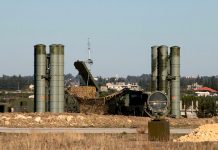
The above image is for representational purposes only.
Emerging reports from Chinese military sources indicate that the People’s Liberation Army (PLA) is experimenting with a hybrid-powered tank. This initiative may mark a significant transformation in China’s strategy toward armored warfare. As reported by Defense Blog, the platform is said to incorporate both diesel and electric propulsion, designed to enhance performance in high-altitude terrains and supply power to advanced onboard systems.
Although official confirmation from Chinese authorities remains absent, this potential innovation fits into the global movement toward energy-efficient military solutions and underscores China’s broader military modernization goals. If validated, the development could influence the security landscape, especially in sensitive regions like the Himalayan frontier shared with India.
While hybrid propulsion is not new to military vehicles, the PLA’s integration of this technology into a main battle tank represents a substantial development. These systems combine conventional diesel engines with electric motors and battery packs, offering advantages such as reduced fuel consumption, lower noise levels for stealth missions, and the ability to power high-energy systems like lasers or jammers.
The reported design appears optimized for operations in oxygen-depleted environments, such as those found on the Tibetan Plateau. In such conditions, traditional engines face performance losses, which electric systems can potentially offset. This aligns with China’s strategic interests in areas like Ladakh, where tensions with India have persisted since the 2020 border clashes.
China’s pursuit of hybrid military platforms mirrors initiatives in other countries. For example, the U.S. has been developing hybrid-electric systems for combat vehicles for years, including the Advanced Ground Mobility Vehicle in 2010. Similarly, Germany’s FFG introduced the Genesis 8×8 hybrid-electric vehicle as a prototype for future European armored systems, emphasizing improved mobility and logistical efficiency.
Globally, these innovations reflect an attempt to balance increasing energy demands with battlefield sustainability. China appears to be tailoring its approach to the unique challenges of its geography, particularly mountainous regions.
Specifics about the Chinese hybrid tank remain unclear. Defense Blog notes that the vehicle reportedly merges a diesel engine with electric propulsion and is possibly a testbed for a next-generation version of the Type 99A main battle tank. Speculative discussions on platforms like Weibo suggest it could support energy-intensive technologies such as directed-energy weapons, though no official technical details have emerged.
The Type 99A, introduced in the early 2000s, is a crucial component of China’s armored forces. It features a 120mm smoothbore cannon, advanced targeting systems, and composite armor. Its current diesel engine produces about 1,500 horsepower, allowing speeds up to 50 mph. A hybrid version could improve both operational flexibility and range, particularly in high-altitude scenarios.
Operating above 10,000 feet presents significant technical challenges, particularly for internal combustion engines. Electric motors, with instant torque delivery and independence from atmospheric oxygen, offer a promising solution. This explains the PLA’s interest in hybrid designs for mountain warfare.
The 2020 Ladakh conflict underscored the importance of high-altitude warfare. China’s use of the lightweight Type 15 tank in that setting revealed the necessity of agile, terrain-adapted vehicles. A hybrid platform could enhance these capabilities further, offering greater endurance and energy capacity for next-gen weapons and sensors.
China’s military modernization is driven by steadily increasing defense budgets and a focus on advanced technologies, from AI to missile systems. The development of a hybrid tank complements this trajectory, showcasing a commitment to incorporating civilian innovations—like electric vehicle technology—into military applications. With companies like BYD leading globally in battery production, China’s industrial base provides a strong foundation for such efforts.
Historically, China’s tank development has evolved from Soviet-inspired models to increasingly sophisticated indigenous designs. The Gulf War was a turning point, demonstrating the superiority of modern armor and prompting China to accelerate upgrades. The Type 99 series emerged from this process, marking a leap in capability.
Today, global militaries are investing heavily in hybrid systems. The U.S. Army is testing the Allison eGen Force hybrid powertrain for platforms like the M2 Bradley, while Germany’s Genesis prototype boasts impressive torque and energy output via a diesel-electric configuration. These systems aim to reduce fuel usage and increase operational efficiency—goals that China appears to be targeting with its new platform.
The logistical advantages of hybrid systems are especially relevant in difficult terrains. Supplying fuel to remote areas like the Himalayas is a major operational challenge. By reducing dependency on fossil fuels, hybrid tanks could extend mission durations and reduce logistical strain.
Ongoing tensions in the Indo-Pacific, including those around Taiwan and along the Indian border, elevate the potential importance of these capabilities. China’s military exercises in these areas, such as the “Joint Sword” drills, illustrate a growing emphasis on readiness and deterrence. A hybrid main battle tank would be a key asset in such scenarios.
Skepticism remains due to the absence of PLA confirmation and the speculative nature of social media reports. Hybrid systems also come with known drawbacks: added weight from batteries, complex maintenance requirements, and unproven durability in real combat situations.
Past U.S. programs, such as the Ground Combat Vehicle, faced similar hurdles. Challenges like system integration, thermal management, and cost have delayed the widespread adoption of hybrid drives in heavy armor. The same limitations may apply to China’s project.
Nevertheless, China’s hybrid tank could serve as a valuable testing ground for broader technological integration, potentially incorporating AI for semi-autonomous functions. Reports have suggested that the PLA is investing in AI-enabled command systems, and the hybrid platform could evolve to support such innovations.
China’s move away from reliance on foreign defense technologies toward homegrown innovation is evident in recent developments. From aircraft carriers to hypersonic missiles, the country is striving to build a self-sufficient, high-tech military. The hybrid tank aligns with this strategy, leveraging its dominance in electric vehicle tech to enhance combat platforms.
In the broader regional context, India remains a key stakeholder. The Indian Army’s heavier T-90S tanks, while powerful, are not ideally suited for mountainous warfare. Although India has bolstered infrastructure and deployed lighter assets in areas like Ladakh, a Chinese hybrid tank could tilt the balance by improving energy efficiency and operational range.
Japan and Australia, both concerned about Chinese military assertiveness, may also watch this development closely. As military competition intensifies in the Indo-Pacific, innovations like hybrid tanks could shape future doctrines and procurement priorities.
Export potential is another consideration. China has already supplied tanks like the VT-4 and Al-Khalid to allied nations. A hybrid variant could offer an edge in international arms markets, particularly for countries operating in difficult terrains or with limited fuel logistics.
Still, the practical hurdles remain significant. Batteries add weight and complexity, and sustaining such platforms in harsh environments could strain supply chains. The success of this project will depend on how well China can address these issues in real-world conditions.
Ultimately, the hybrid tank may serve multiple purposes: a tool for innovation, a strategic signal to rivals, and a testbed for next-generation battlefield technologies. While much remains uncertain, the platform reflects China’s ongoing effort to redefine the parameters of modern armored warfare.




